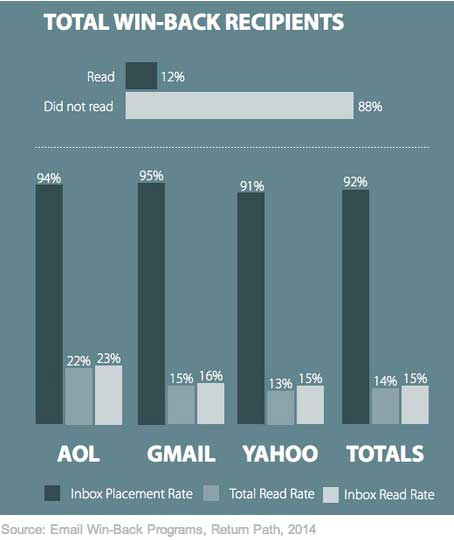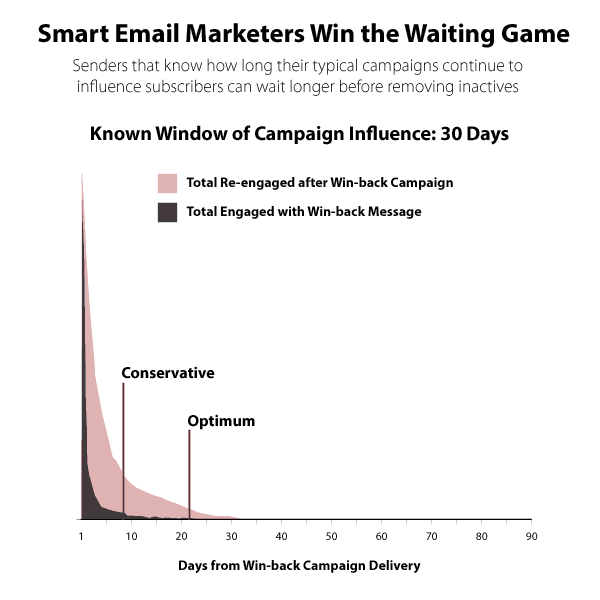What are the best ways to re-engage inactive email subscribers? Take the time to show them you care or offer them a fixed discount, according to a recent report from Return Path.
The analysis of 33 win-back campaigns by retailers found that reactivation emails with the words "miss you" and "come back" in their subject lines had higher read rates (13% and 12.7%, respectively) than emails offering standard percent-off discounts (11%).
Fixed-amount ($ off) discount emails had the highest read rate of any win-back tactic examined (21%), yet they were sent far less often than percent-off emails.
Re-permission emails, where the sender attempted to get long inactive recipients to opt into receiving emails again, were found to be ineffective, with only a 1.8% average read rate.
Below, additional key findings from the report, which was based on data from 300 million emails sent to 100 million subscribers.
Read Rates
- 92% of the win-back emails examined made it to consumers' inboxes.
- However, only 12% of subscribers who received win-back emails took the time to read them.
- AOL mail users had the highest win-back email read rate at 23%, Yahoo mail users had an average read rate of 15%, and Gmail users had a read rate of 16%.

Re-engagement
- 45% of recipients who received a win-back email engaged with subsequent emails from that brand.
- However, only 24% of those who opened later emails actually read the win-back email, indicating that a brand should not rush to cull its list if it does not see good a response to an initial re-engagement campaign.
- Moreover, re-engagement often takes a while: The average length of time between when people received a win-back email and when they read a subsequent message from the sender was 57 days, the analysis found.
- Some recipients were still opening emails from brands 300 days after receiving (and ignoring) a win-back message.

About the research: The report was based on data from 300 million emails sent by retailers as part of 33 win-back campaigns conducted between April 1, 2013 and January 31, 2014.




